This post is part 3 of a five-part series on frugal living.
With rising food prices and a challenging inflationary environment, keeping our food budgets in check is essential.
Thankfully, I was raised in a frugal home and have spent most of my life cooking from scratch, raising my own food, and preserving the excess. I’ve learned many skills, tips, and tricks for keeping a frugal kitchen.
Here are some of my best tips and techniques to help you keep your kitchen a frugal one!
- Plan Your Meals
- Plan Your Grocery Trips
- Cook from Scratch
- Food Prep Shortcuts
- Organize Your Kitchen
- Reduce, Reuse, Recycle
- Explore, Experience, Enjoy!
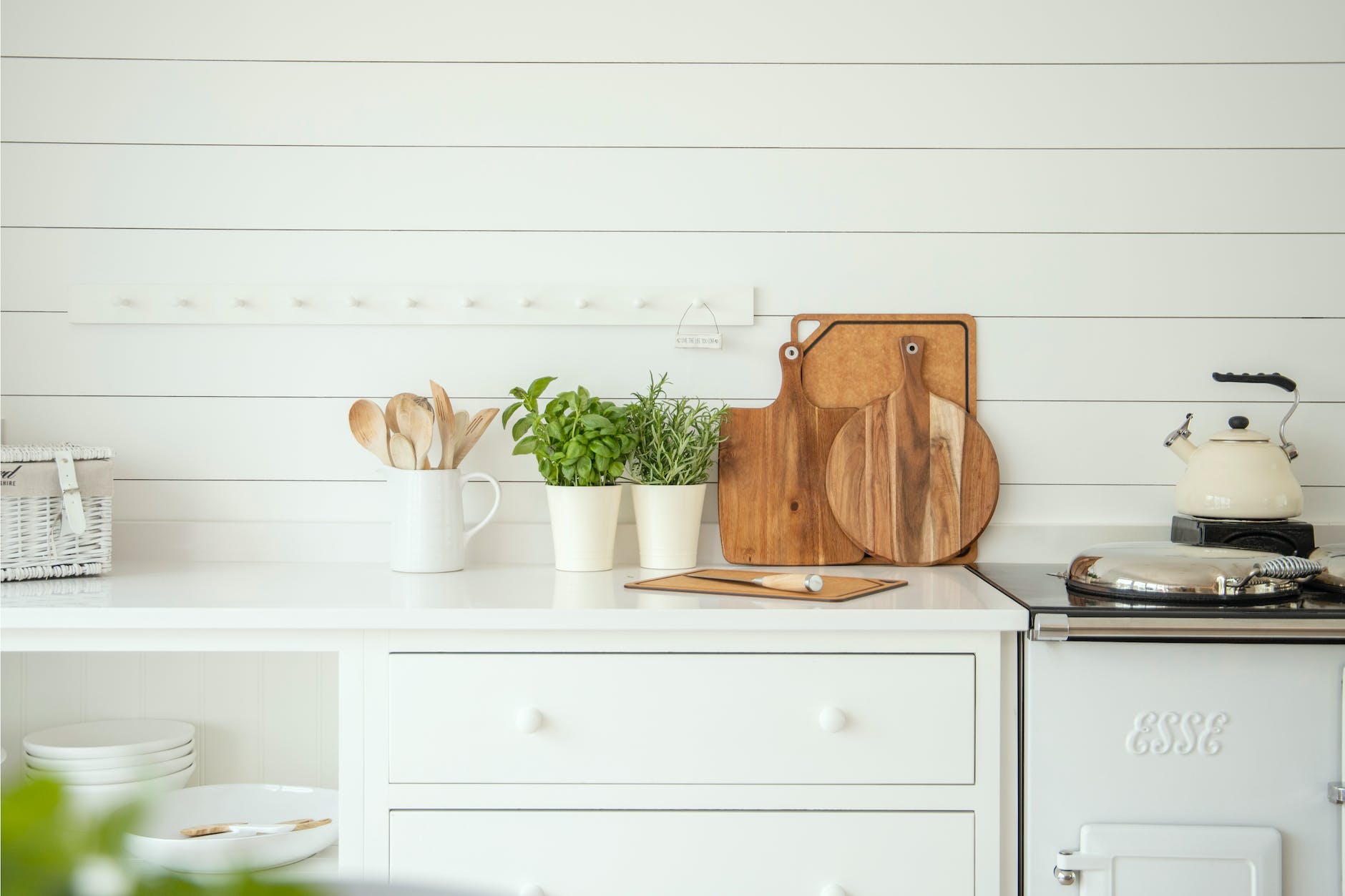
Start by Planning Your Meals
You can be frugal with your time and money by planning your meals in advance.
Create a Weekly Meal Plan
Choose a time once a week to plan out your meals. The day before grocery shopping is usually best. For example, every Thursday night my husband and I sit down at the kitchen table to plan out our meals and grocery list. This saves us time by taking out the guesswork for the inevitable question: “What’s for supper tonight?”
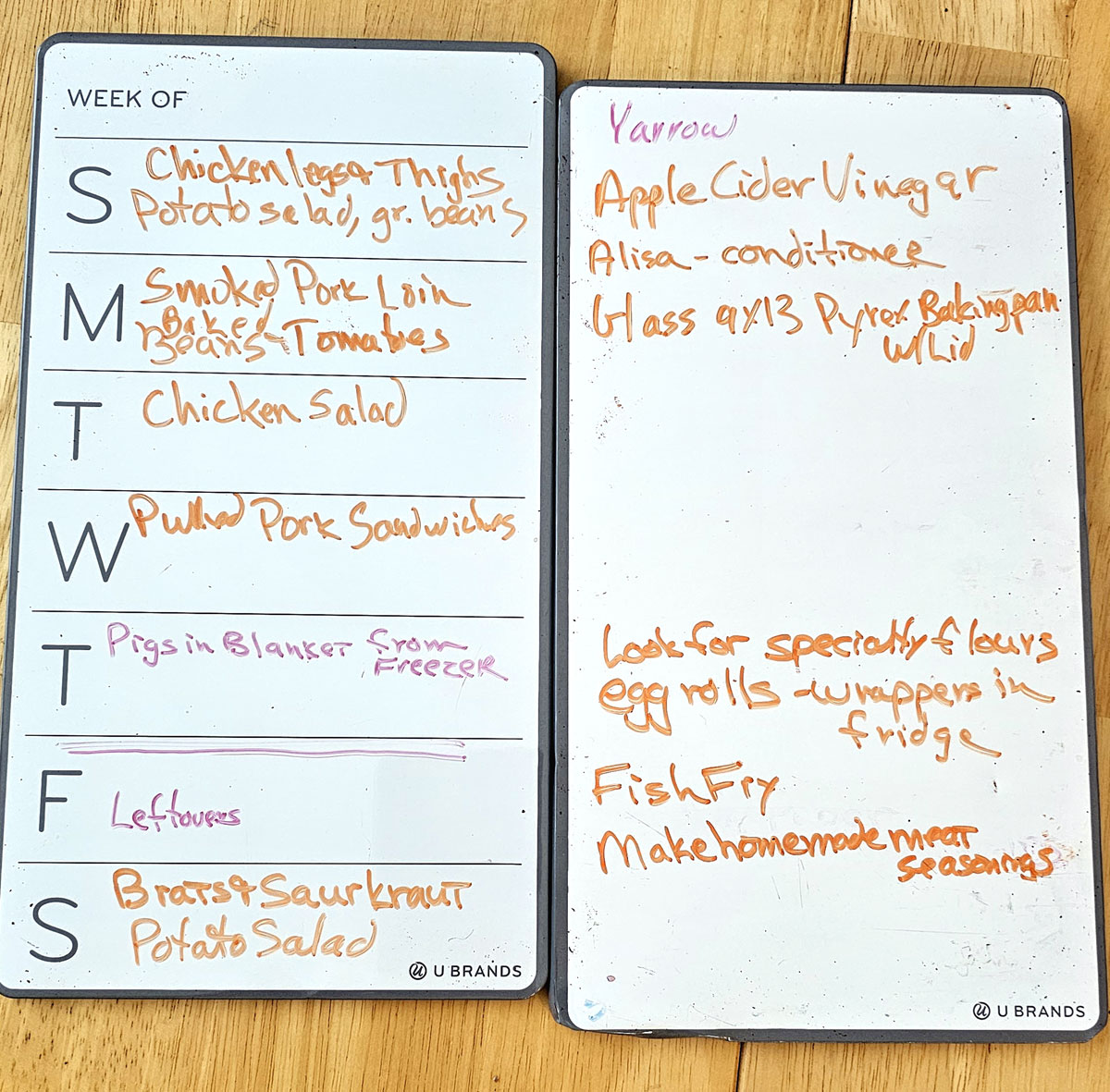
Keep a Visible List
Once you’ve planned your meals, keep the weekly menu in view. I like to post our list on our refrigerator. I also keep a marker board in the kitchen to write down any item we run out of or run low on. This makes grocery planning go much faster.
Brainstorm Meal Ideas with the Family
One person does not have to do all the planning. Making meal planning a family event can provide new and creative ideas for delicious dishes. It’s also a great way to teach children self-reliance and encourage creative thinking.
Plan for Eating Out
We all lead busy lives and eating out is inevitable. Plan ahead for any meals at a restaurant or ordered in.
Plan Your Snacks Too!
There’s no reason not to eat healthy snacks if you plan them in advance. We keep our favorites in stock for when we get the munchies.
Shop Your Pantry
Before you finish your grocery list and go shopping, look over your pantry for meal ideas. Are there pasta or grains that need to be used? Are you low on any spices? How many home-canned jars could you use for this week’s meals? Always try to use a few items from your pantry. You keep your stock rotated and keep the weekly food budget down. Use a Pantry Inventory list to avoid expired dates and freezer burn.
Plan Your Grocery Trips
Shop as few times as necessary. We only grocery shop once a week. This saves us time and money spent on gas driving around from store to store. We try to get everything at one store, but sometimes visit two.
Never Shop Hungry!
Oh my! What a way to rack up a grocery bill by impulse buying! Make sure to stick to your list and not grab-and-go just because hunger strikes.
Buy Fruits and Veggies in Bulk and in Season
In-season produce is the least expensive option at the grocery store. You can enjoy the fresh produce then preserve any extra by canning, freezing, fermenting, or drying. It’s best to buy bulk produce in-season. You not only get the best price, but the best quality and flavor.
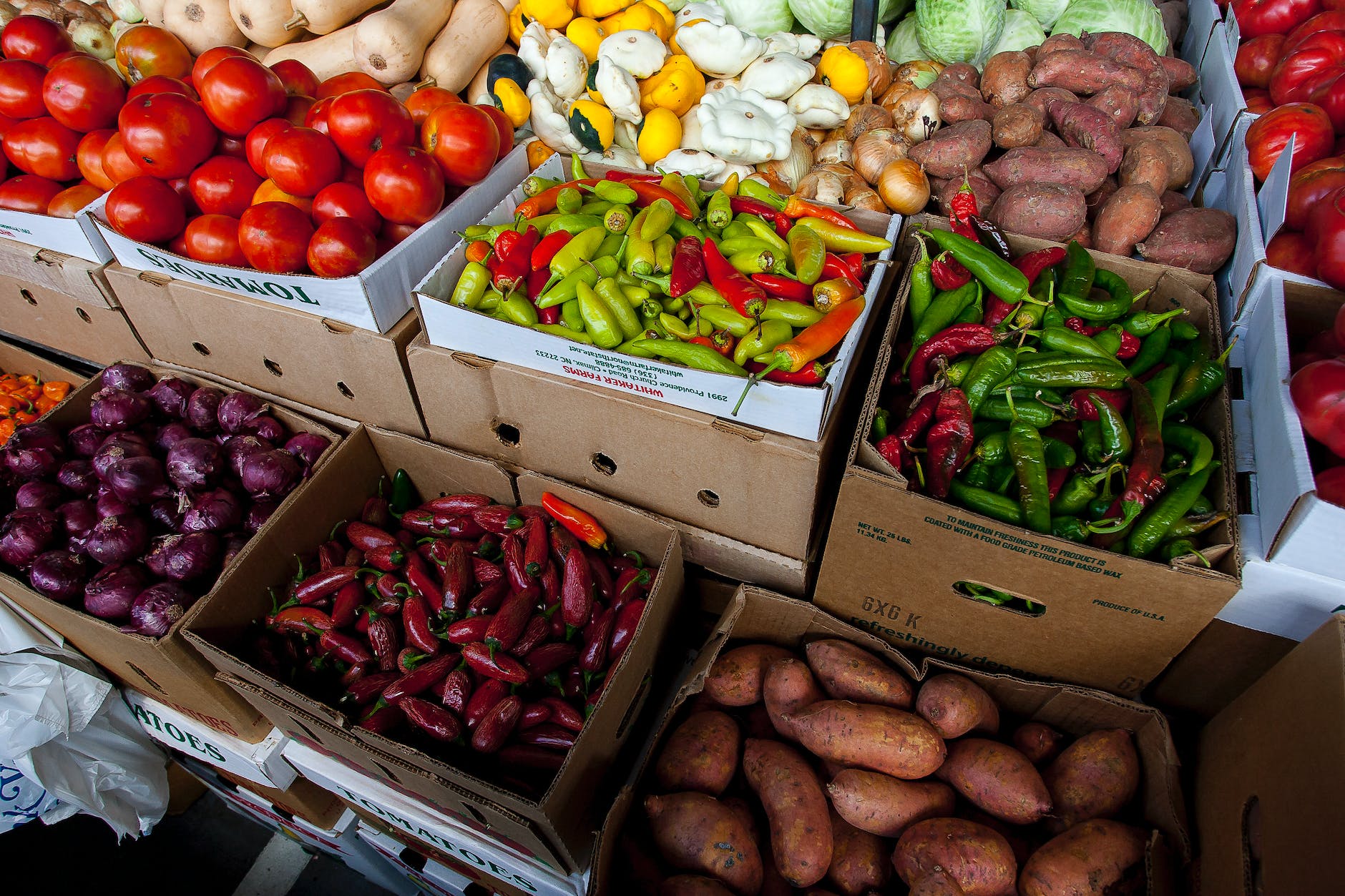
Purchase Larger Cuts of Meat
Larger cuts and less processed pieces of meat typically cost less per pound than a whole package of one type of cut. For example, you can purchase several whole chickens at a lower price per pound, then cut and freeze portions as you’d like. A large pork loin can be cut into loin chops or country-style boneless ribs. By learning to cut your own meat you can save a lot of money.
Shop Your Local Farmer’s Market
Your local farmers will hands-down provide the best seasonal produce in your region. At most markets, you can find fresh fruits and veggies, meats, eggs, baked goods, honey, seasonings, and items unique to your area. Shopping your local farmer’s market supports the local economy, provides more variety, and is an environmentally responsible way to shop. It can also be a fun experience for the kids, a family outing, or fun time shopping with friends.
Buy Store/Generic Brands
Sometimes, when money is really tight, buying store-brand items is the way to go. I’ve learned that most store brands of items like canned goods or boxed pasta taste similar to or just as good as the name-brand foods. They cost less, and even those small savings will add up over time.
Cook From Scratch
Cooking from scratch can save you a lot of money. Homemade breads, condiments, and home preserved foods are some of the best money-saving skills a homesteader can have.
Bake Your Own Bread
It’s one of the easiest ways to save money in the kitchen. It’s pennies-on-the-dollar to bake a loaf instead of purchasing a plastic-wrapped loaf on a grocery chain shelf. Homemade bread is also healthier than mass-produced breads. I’ve never found a bread recipe yet that called for preservatives or corn syrup!
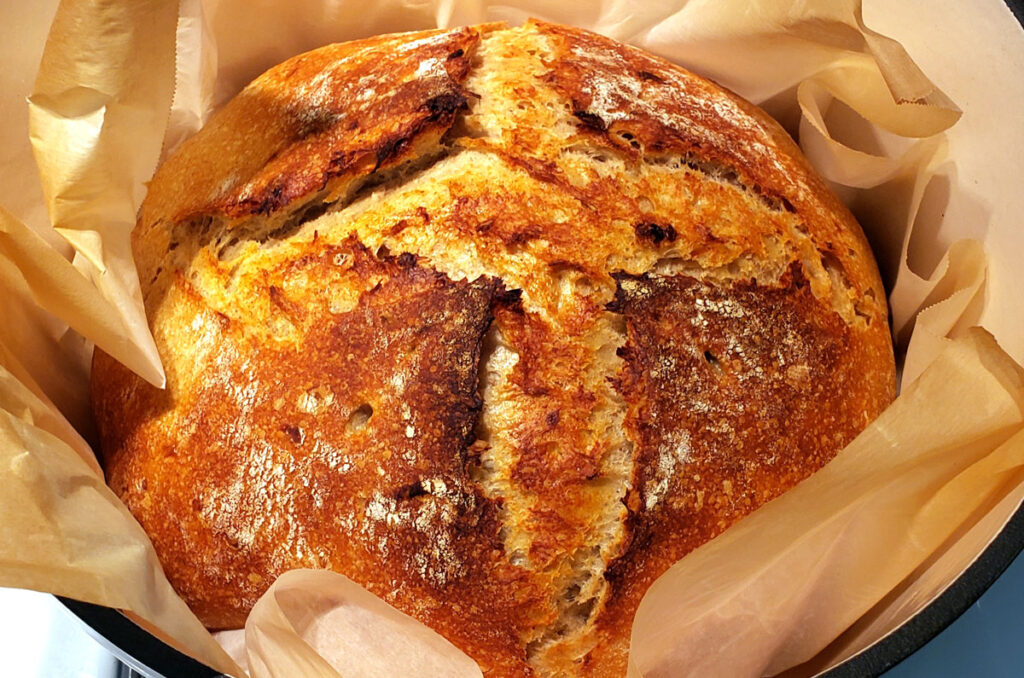
Get Creative with Leftovers
This skill takes a bit of time and practice, but is well worth it. I purposely plan large meals with the intention of reusing parts of what I’ve prepared to create another meal. Most often, it’s lunches to take to work. However, leftovers from a large roasted chicken have evolved into chicken sandwiches, chicken tacos, or even chicken noodle soup. Large batches of soup are great! I serve half for a meal, and freeze the other half to keep quick meals on-hand during busy times.
Have Fun with Desserts
Compare the price of a cake in the grocery store to the ingredients list for a homemade cake and you might be surprised! Bake up extra cookies, brownies, or other goodies and freeze portions to have on hand to grab-and-go. Make up extra fruit pies from that in-season produce you bought. Even those vintage 1970’s Jello salads are an inexpensive treat.
Make Your Own Condiments and Seasoning Mixes
It only takes a few minutes to gather some ingredients, mix them up, and store them in a jar. Don’t forget to label them and include the date the mix was made. Some of my favorites are seasoned salt, pork rubs, dry ranch dressing mix, and a shake-and-bake style chicken/pork breading that my husband asks for often! He’s also started making his own mustards from scratch. This seasoning-making activity is contagious!
Food Prep Shortcuts
Practice Meal Prepping and Batch Cooking
I’ve alluded to this in the previous sections, but it can’t be said enough, that it saves you so much time and money. Breakfasts are perfect for this. Make up extra waffles or pancakes and freeze. Bake up a batch of mini frittatas or cook some breakfast tortillas to keep in the fridge for a quick breakfast. Bake up a batch of homemade granola bars for snacking during the week. For lunches and dinners, a crockpot is your best friend. You can roast a chicken or other cuts of meat during the day and your meal is ready for supper. Soups and stews can simmer all day too. There’s nothing like coming into the house on a cold day and smelling that soup waiting for you!
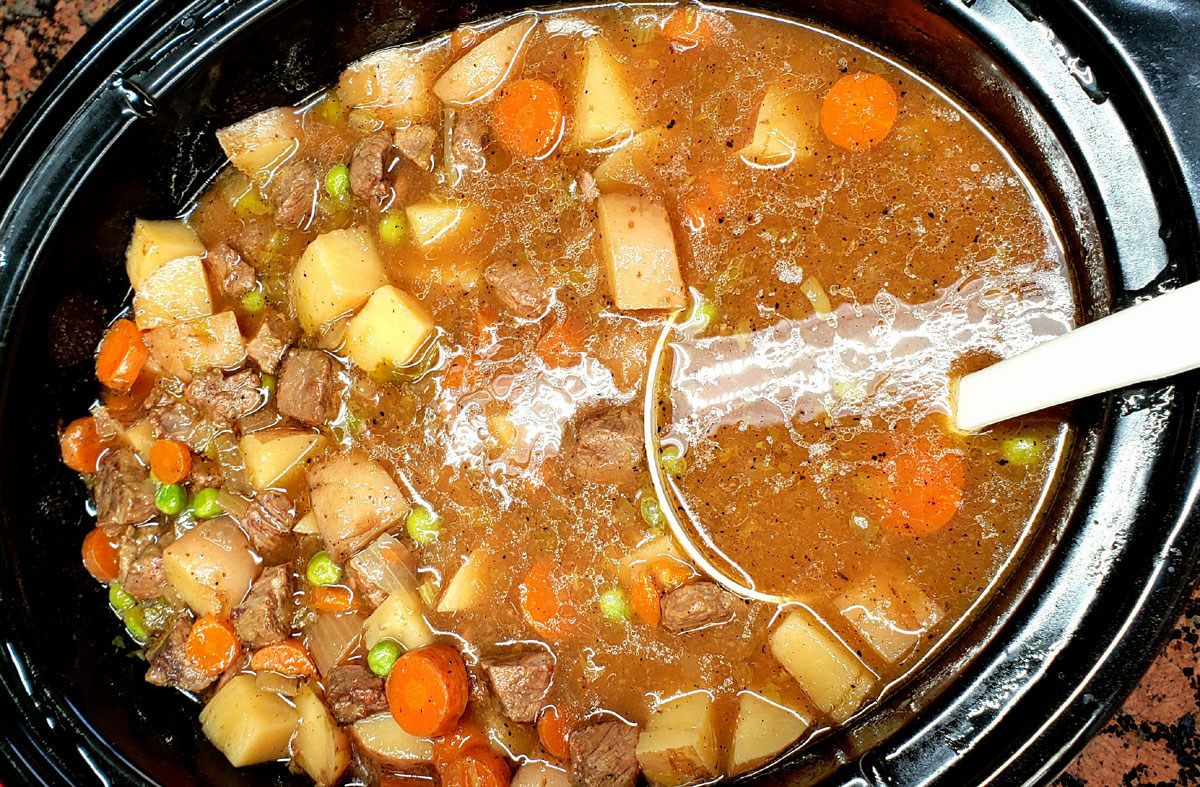
Whole Birds
The cheapest way to buy chicken and turkey is as a whole bird. (This shortcut is even better if you grow your own!) Learn to part-out the sections and freeze for different meals. Consider your favorite recipes and decide how many birds you need to process. Cut up, package then freeze for your favorite meals. Try making bone broth or stock from the carcasses and giblets of roasted birds.
Render Bacon Fat or Beef Tallow
Rendered fats are healthier than processed seed oils. Plus, it’s a great way to save money on fats by using what you already have instead of tossing it into the trash.
Homemade Baby Food
When I started introducing foods to my baby daughter, I was encouraged to use the baby foods in those tiny jars from the store. But after opening and smelling them, I couldn’t bear the thought of giving some of them to my daughter. I didn’t even want to taste them! So, I made my own baby food by cooking our vegetables plain without seasonings and mashing them by hand. We also had plenty of home-canned apple sauce, and all my kids loved mashed bananas. I got some good advice from experienced moms and was happy to be serving my babies quality foods I had made myself.
Dried Foods
Homemade fruit roll-ups, dried fruits, and jerky are some excellent snacks for your family. Dried fruit snacks are a healthy way to take advantage of an abundance of produce. I’ve made fruit snacks from windfall apples and pears, inexpensive bananas, and foraged fruits.
Organize Your Kitchen
Good placement of tools and appliances, and a well-organized pantry will help you make efficient use of your time in the kitchen.
Organize the Pantry
In my house, I have four places to store food that I call my pantries: Dry Goods Pantry, Freezer, Refrigerator, Home-Canned Pantry. I check them regularly using my Pantry Inventory Worksheets.
In the dry goods pantry, keep stocked up on your basics such as grains and pastas, canned and boxed foods, and baking items like flour, sugar, baking soda, etc. Make sure to organize by expiration date and check regularly. You can include your spices and seasonings in this category too, even if you keep them in a separate spice cupboard or drawer.
In the freezer pantry, keep your extra cuts of meat, quick meals you’ve prepped like soups, and frozen veggies from the garden harvests like green peppers, corn, or beans. Many people buy (or harvest their own) partial cow or pig to have meat stored for many months. When I was growing up, my mom would send me downstairs to get something out of the deep freezer for supper like a bag of frozen strawberries, or maybe a cut of beef to thaw. Our freezer was an essential “pantry” of my childhood.
The refrigerator is a short-term pantry. Condiments such as mustard, sauces, jellies or pickles often sit for months in the fridge. Keep track of what’s hiding in there! For example, sometimes when meal-planning, knowing that you have too many bottles of salad dressing might prompt you to plan a salad for a meal.
Depending on how large your home-canned goods pantry is, you could keep your family fed easily for over a year! Everything from fruits, to veggies to soups and meats can be canned. Like I mentioned above, always shop your pantry when making a meal list.
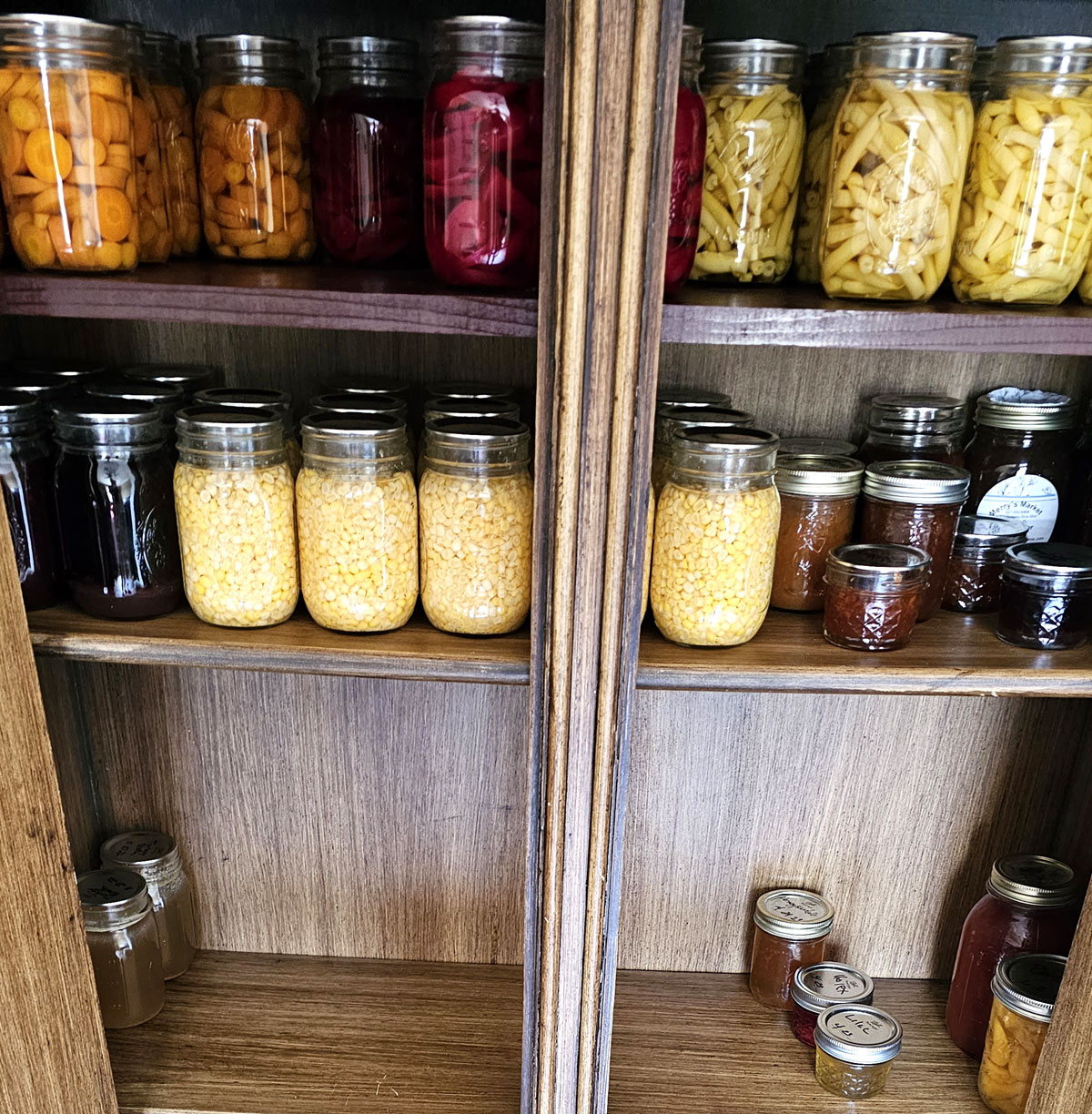
Root Cellar
I was lucky enough to grow up having a root cellar. I’d often take a bowl downstairs to gather potatoes or grab a squash for supper. It’s also where my parents kept our home-canned goods. Just like the other pantries, keep track of what’s in there. Many foods can spoil over time like potatoes, onions, and squashes. Shop your root cellar often when planning meals.
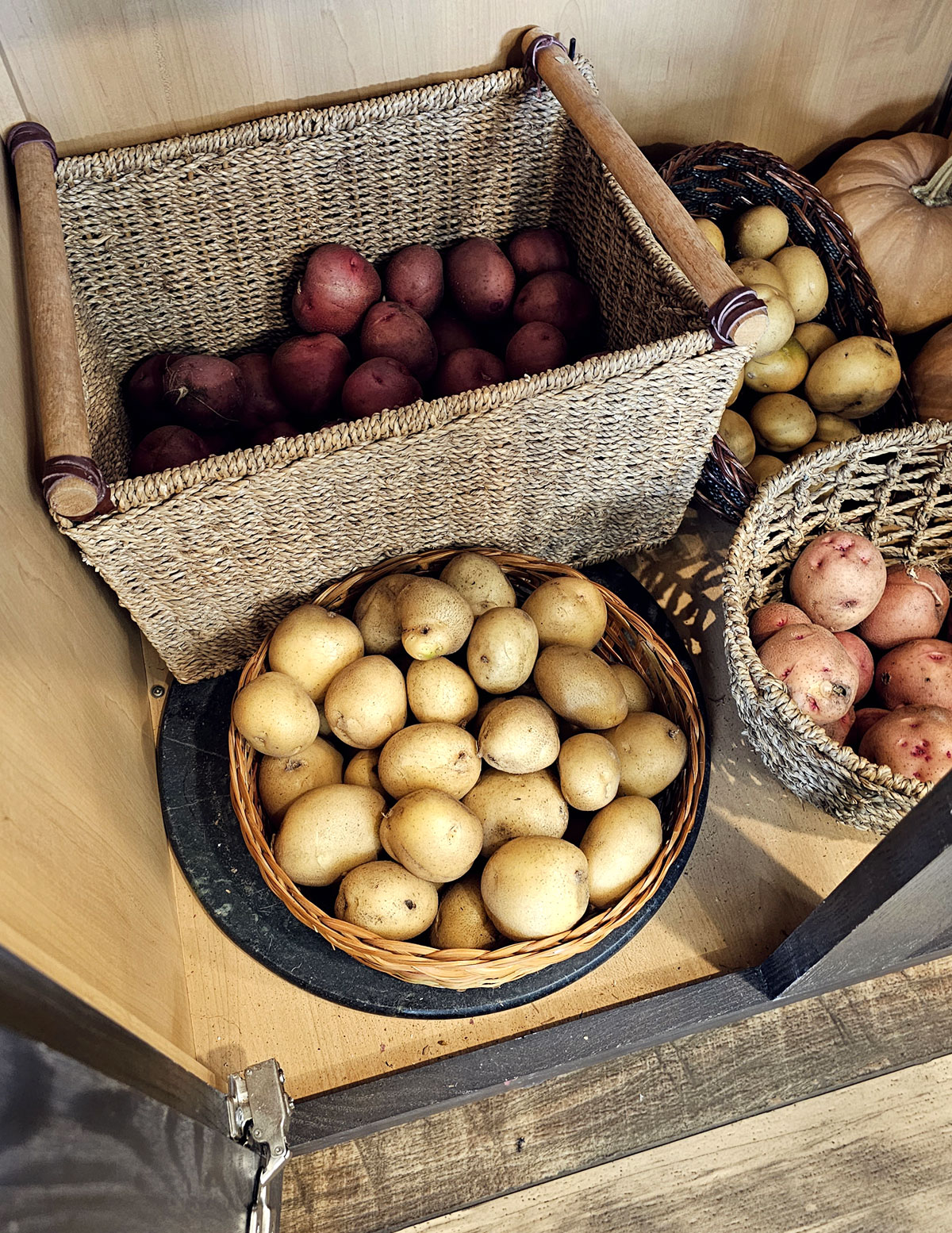
Organize the Cupboards and Drawers
Just like your food, organizing your kitchen tools can save you time. When everything is in the best place, you can quickly get your meals prepped and get on with your day. Simple things like oven mitts in the drawer next to the stove, all the baking tools in one area, and all the pots and pans near the stove, can make meal prep easier.
Reduce, Reuse, Recycle
I’ve been hearing this phrase since childhood. Although cliché, it holds true when being frugal in a kitchen.
Reduce the Clutter
Save time looking for your favorite mixing bowl or that necessary kitchen tool. Go through your kitchen once a year, give away or toss out anything you don’t need. Reorganize if you need to. If you’re really into being thorough, write down every item in your kitchen and what you use it for. If you can’t think of a use for it, it’s time for it to go.
Reduce the Cleaners
Simple cleaners made from vinegar, baking soda, and other household ingredients can save you money and reduce the amount of plastic you send to a landfill.
Reuse Containers
This is common practice in our kitchen. Glass jars from purchased pasta sauce are reused for seed saving, or dry herbs for my herbal teas. I also use the larger opening jars (like pickle jars) for starting cuttings of sweet potatoes or other plants. My husband uses the largest jars for storing screws, washers, etc. in the workshop.
Plastic containers from yogurt, sour cream, etc. I reuse to pot up seedlings. Any food-grade container is safe for your plants during that short growing season before going into the garden.
Shop yard sales or thrift stores to reuse other’s no-longer-needed kitchen items.
Recycle Excess
Food scraps account for about 60% of residential landfill waste. Why not feed your compost? Many large cities now offer composting services which is great for anyone who doesn’t have a place to compost.
Take advantage of any recycling service your waste management company offers.
If you use them, recycle those plastic grocery bags. They make great small trash can liners and emergency doggie-litter bags at dog parks. Most large grocery stores now offer recycling for their bags, so take advantage.
Explore, Experience, and Enjoy!
This article is only a short list of the many ways you can be frugal in the kitchen. I hope I’ve inspired you!
Here’s another quick list of ideas to Explore
- Follow me on Pinterest!
- Find frugal cooking videos on YouTube.
- Read cooking blogs and follow your favorites.
- Read free books from your library.
- Take a cooking class.
- Learn how to grow and preserve your own foods.
- Cook with friends, or start a cooking club.
- Get the kids involved in 4-H.
- Learn a new preservation skill.
And whatever you choose to do, enjoy the journey!
Pin for Later!

[…] a frugal way to create delicious beverages at a fraction of the cost.*You can create your own unique flavors […]